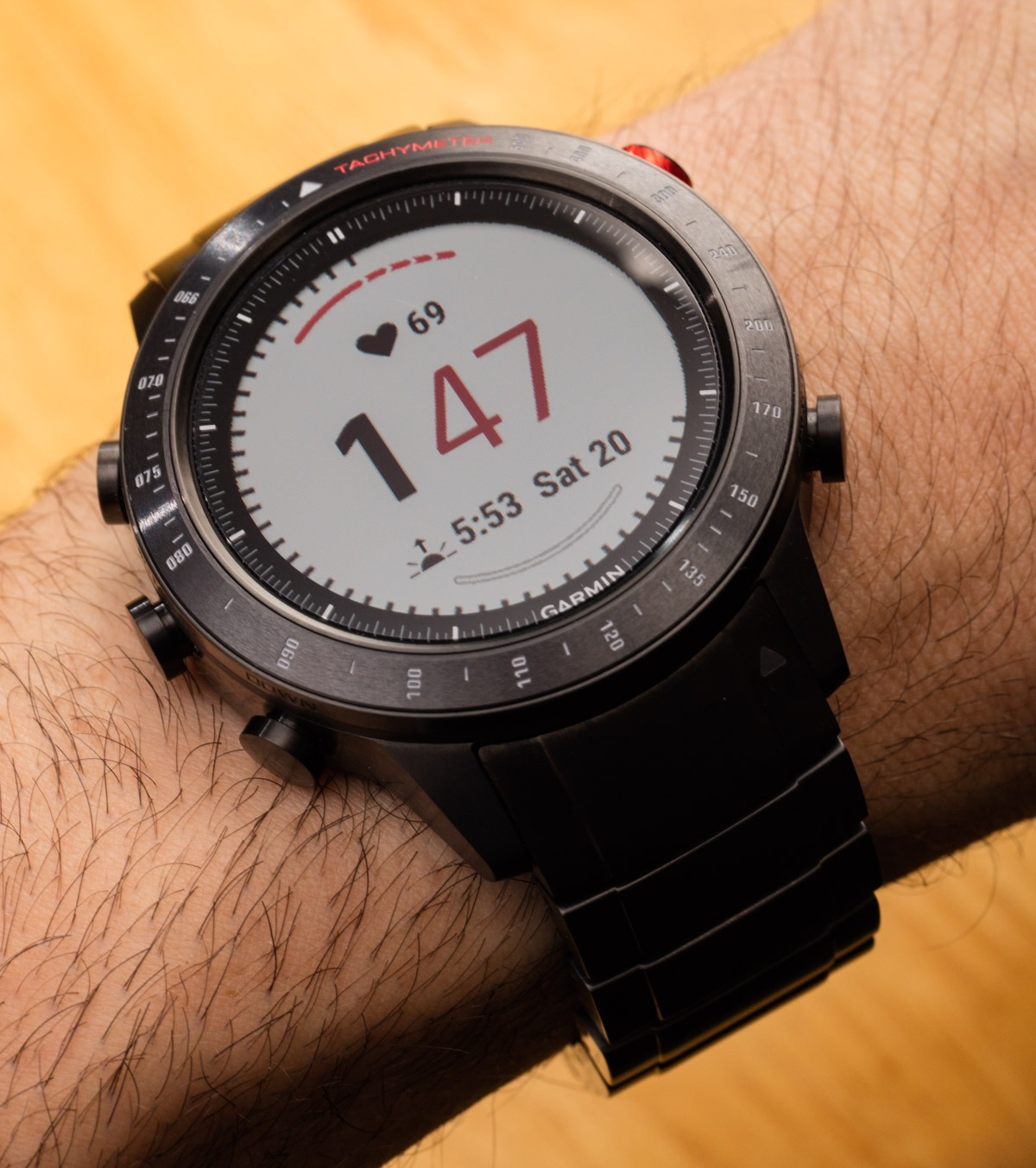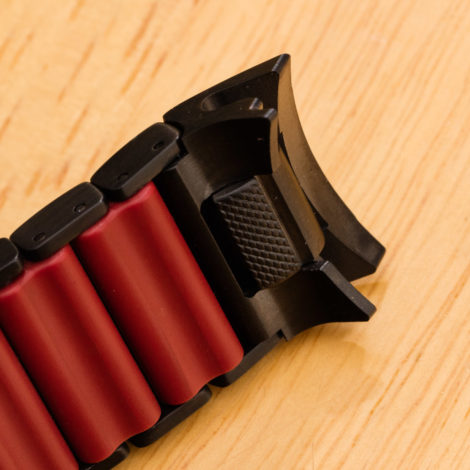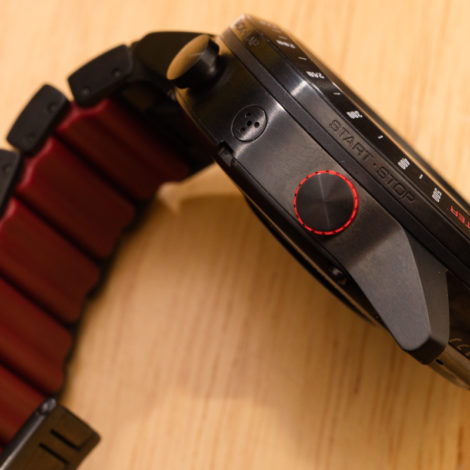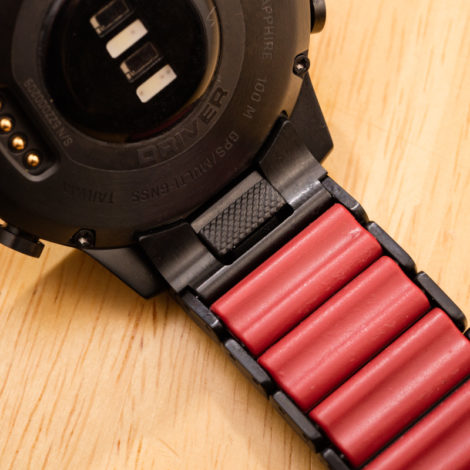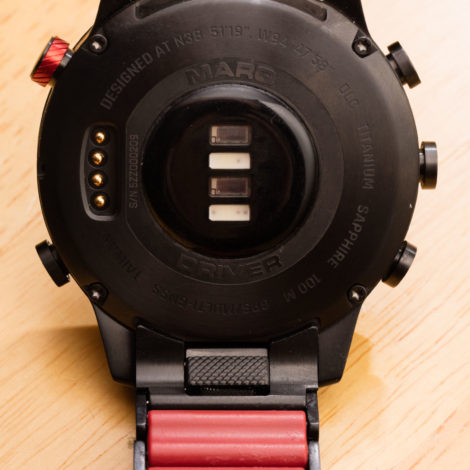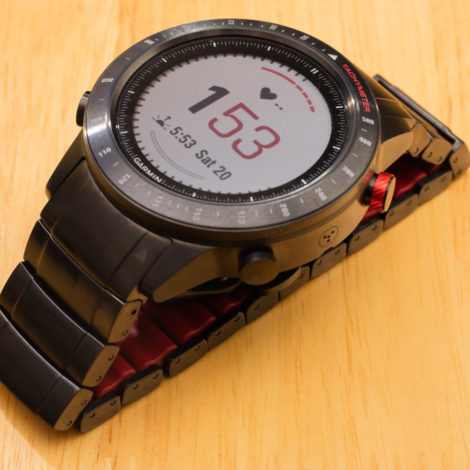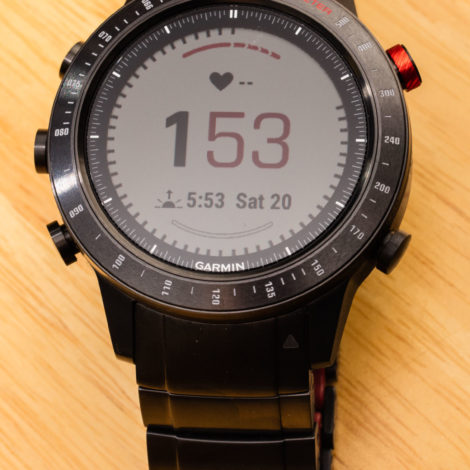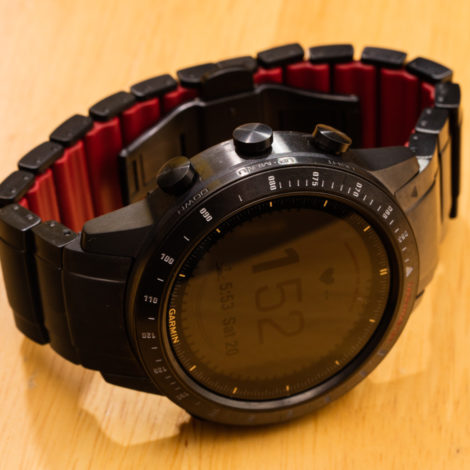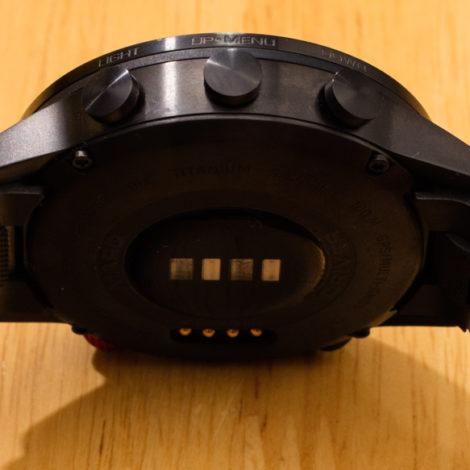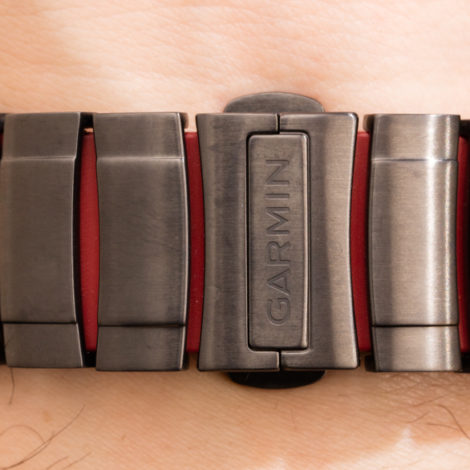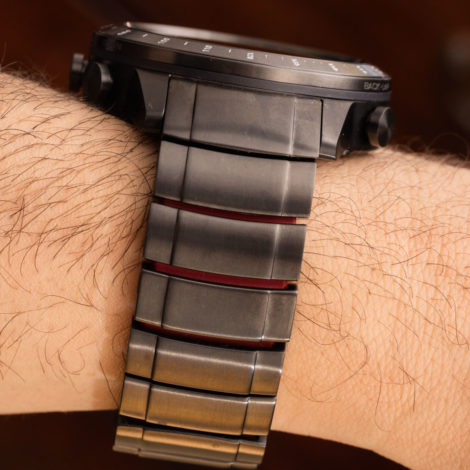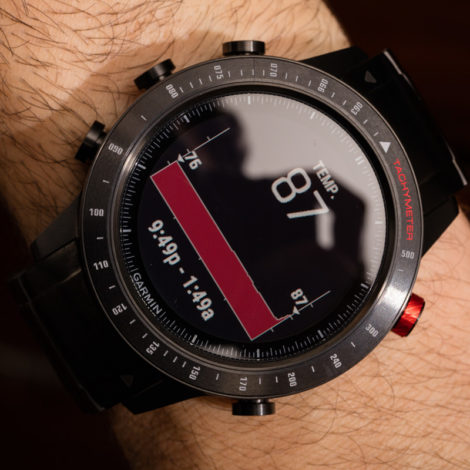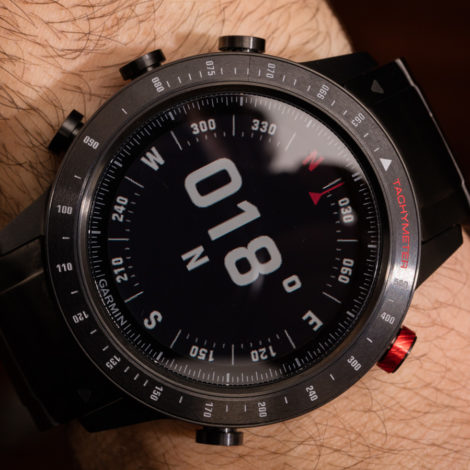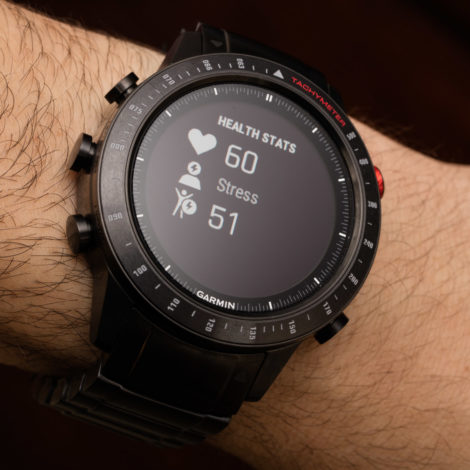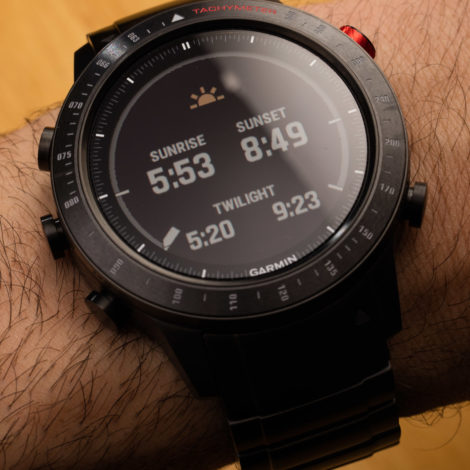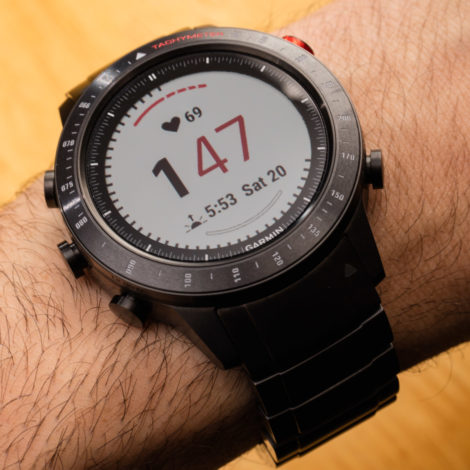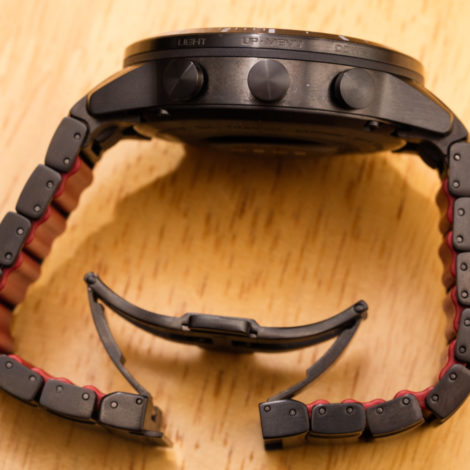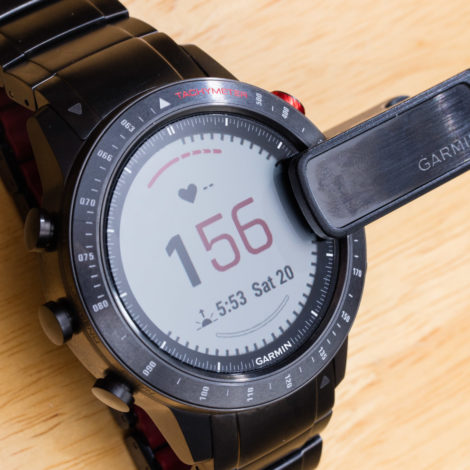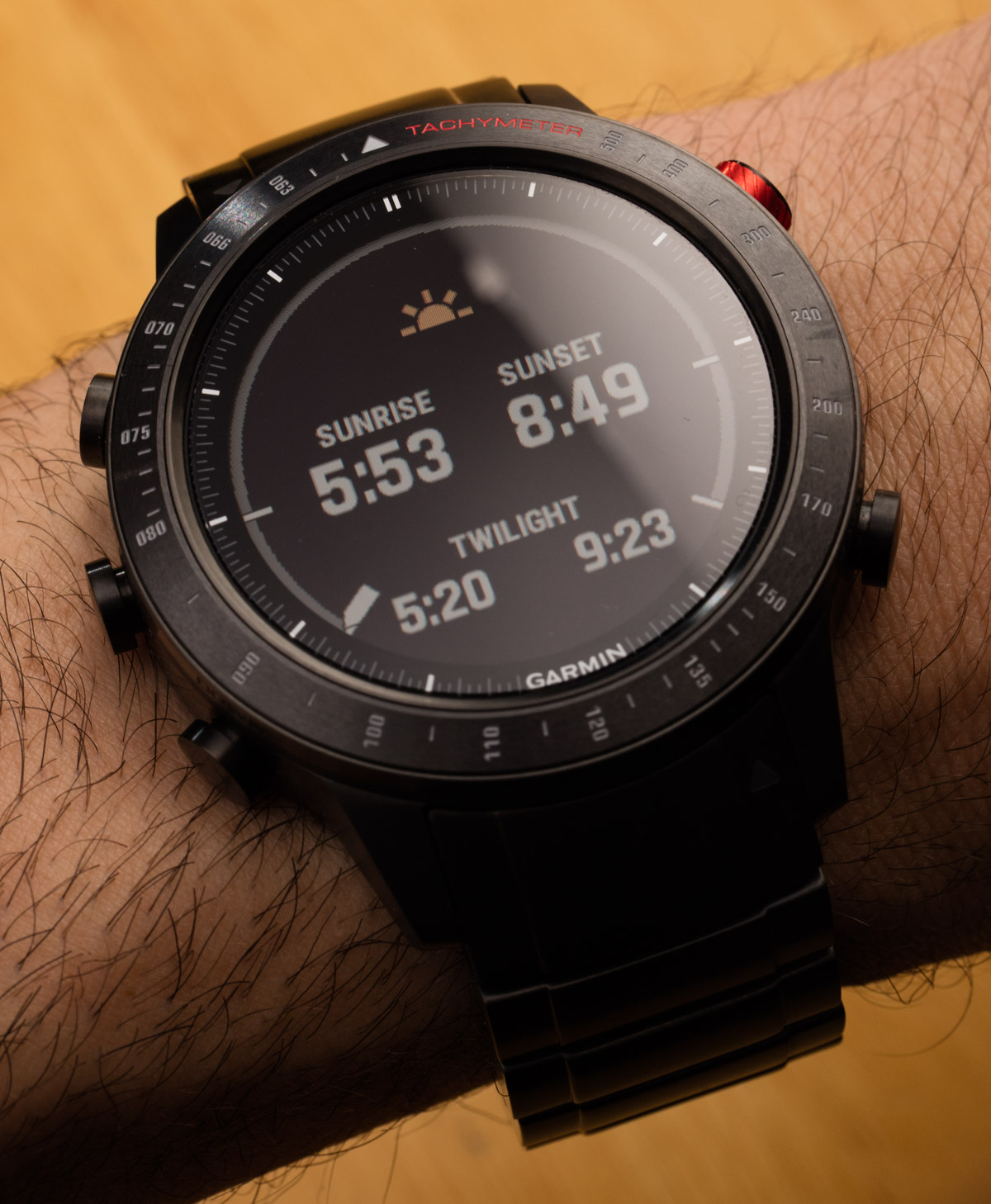
A good example is that, by default, when you track a workout, you can’t see the time on the dial. There are ways of showing the time, but, again, you need to either change default settings in the menu or start to play with the buttons. Garmin has, for the most part, made sure the functionality is there, but I think they still have a ways to go in making sure that their mainstream customers, as well as professional athlete customers, know how to make use of the devices, since the learning curve is real.
When you aren’t actively tracking a workout or adventure, the Garmin Marq also has standard activity tracking features using sensors such as the accelerometer, GPS, and heart rate monitor. Garmin did a particularly good job of making the heart rate monitor useful. You can idly watch your current heart rate on the main screen of the watch, or you can look a bit deeper to see recommended recovery times (if you are training) or just to see if you are experiencing too much stress. As someone who wants to keep their heart rate down as often as I want to dial it up, I really liked being able to monitor my body’s stress level by looking at my watch screen.
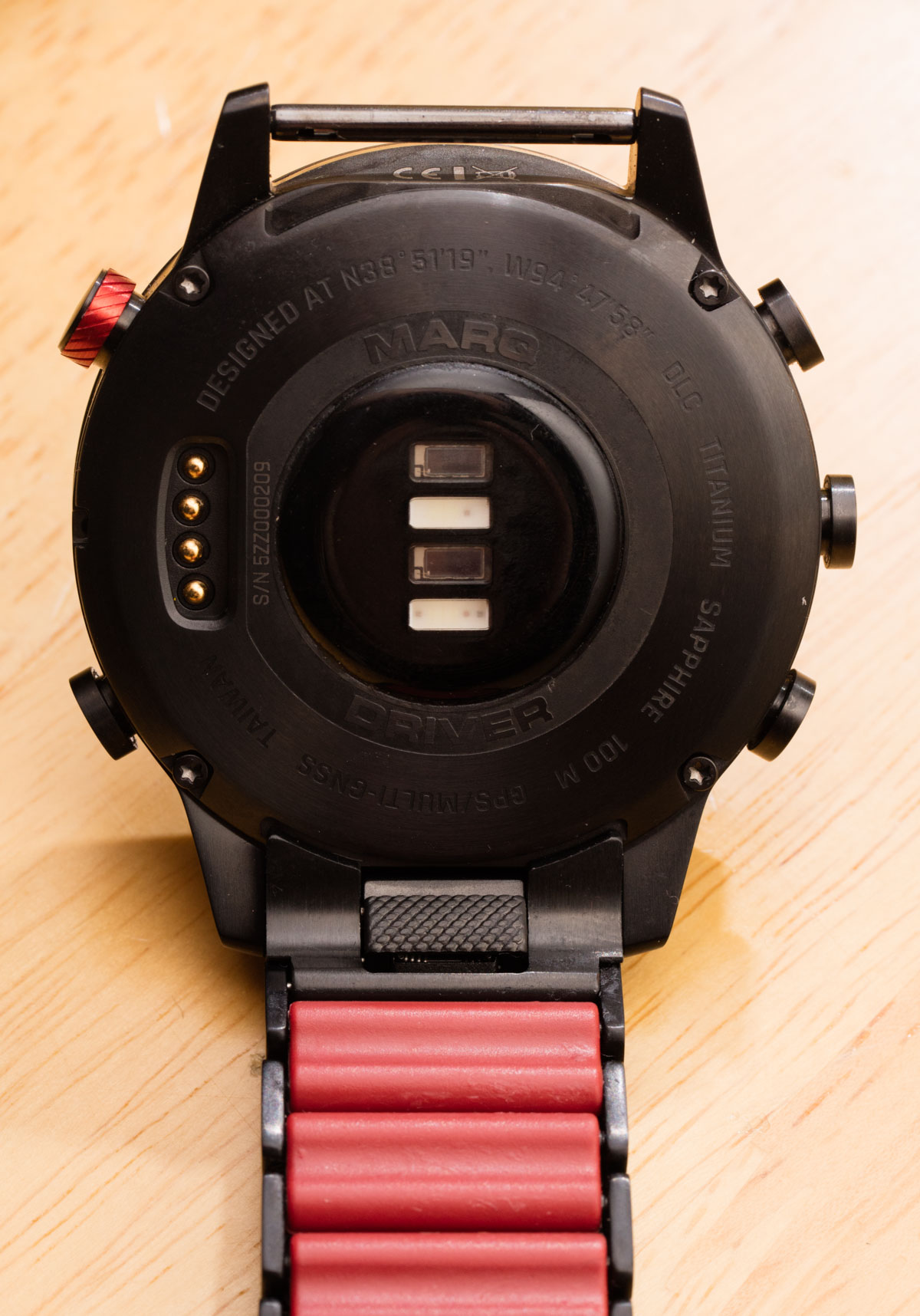
Visually, the Garmin Marq screen is legible and of a pretty high quality. The watch uses a sapphire crystal over the screen to protect it, and the screen itself is a full-color LCD display that (depending on the particular screen you are viewing) is able to reflect light to make it even more legible during full sunlight. In that regard, Garmin has among the most legible smartwatch screens around. That does mean the viewing it is a bit less than ideal in low-light situations. Garmin has a backlight for that, which automatically turns on when you lift your wrist or press one of the pushers on the dial.
It makes me very happy that Garmin designed the Marq with an always-on display. I remain quite hostile to the fact that many smartwatch screens are dark when they aren’t being used. From a strict efficiency standpoint, it makes sense to reduce battery drain, but everyone’s watches just look dead. Garmin’s full-color, always-on screen might not be a bright animated wonder like the screen on an Apple Watch, but it serves the purpose of making sure the screen is never dull and blank. Like I said, though, absent sufficient light in the room, the dial of the Marq can be hard to see from a few feet away. I say this as the Marq rests on my desk about three feet from me and, in a modestly lit room, the dial is hard to see. Eventually, I’d love for companies to find a technology that uses minimal energy to offer a bright and always legible smartwatch dial all the time.
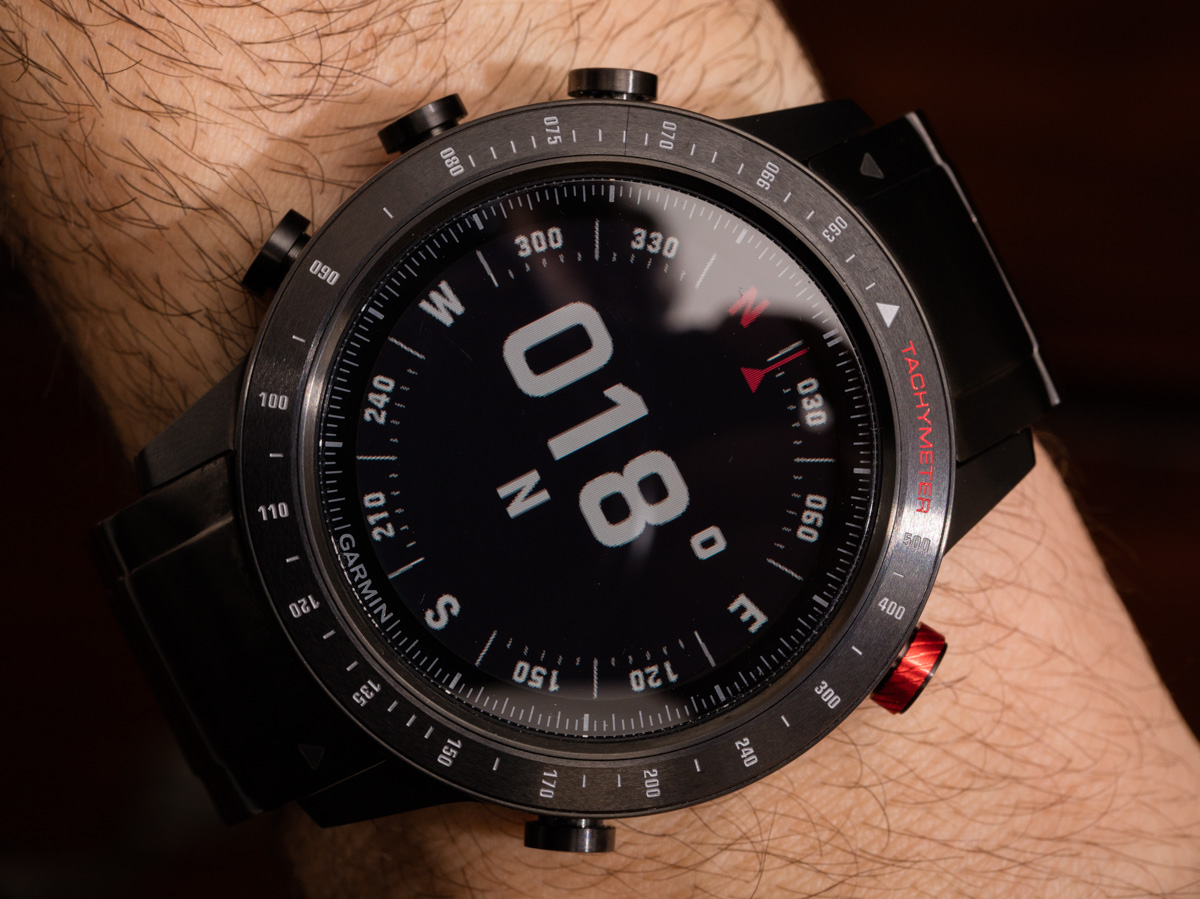
The Marq is well made as a timepiece, and this is where Garmin will find most of its success. Customers already have tons of smartwatch options if they simply want an activity tracker or notification device. The Marq is an evolution on the Garmin Fenix Chronos (aBlogtoWatch review here), which was the brand’s first attempt at a “mature smartwatch.” The idea is a product that someone wants to wear as much as they like to wear it. This follows the appeal of a luxury timepiece where the value is in how the product makes you feel, as well as what it says about you to others. Garmin, like other technology companies, has had to become a fashion house as well as a technology firm, given the fact that consumers actually have to wear this piece of technology.
The Marq, with its five versions and fancy titanium cases, is supposed to look like an exciting toy (just don’t use that term with the customer) that helps suggest the functionality of the watch and the lifestyle of the wearer. This particular Marq Driver has a 46mm-wide by 14.7mm- thick black DLC-coated titanium case with a matching hybrid titanium bracelet. It also has a ceramic bezel insert and more or less all the materials and quality you’d hope to find in a watch priced in the several-thousand-dollar range. Garmin has reached the level of some luxury Swiss watches, especially at this price point.
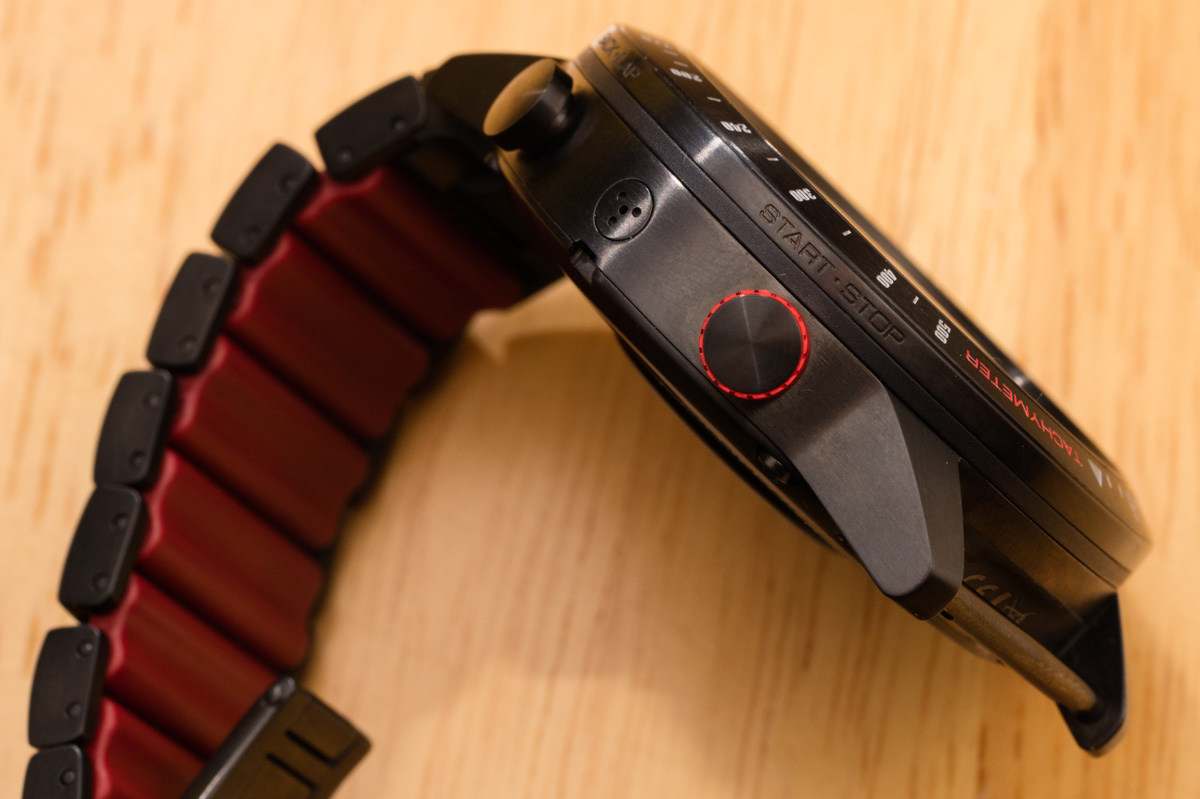
The idea is that Garmin wants to marry its increasingly refined software and smartwatch-wearing experience with a high-end package that a well-to-do customer (a man, in this case) wants to be seen with. The Marq is supposed to be a smartwatch for people accustomed to wearing a nicer traditional watch, and it is also a smartwatch for people who are concerned that most other smartwatches look like unattractive gadgets on their wrist. Garmin itself muses about how it was an innovator in unattractive wrist gadgets because, at the time, they were making them, the goal was all about functionality.
Circa 2019, the smartwatch goal is more about consumer adoption as opposed to satisfying particular utility needs. The market is still, for the most part, trying to figure out those essential functions and uses that are best suited to a smartwatch, as opposed to other products (such as a phone). Until then, the name of the game is making lifestyle smartwatches, which encourage consumers to adopt this still-fresh technology while offering a few new features. Yes, there will be some people who want to use the Marq Driver because it comes pre-loaded with most of the world’s famous racetracks, and when they are doing laps on those racetracks, the watch will automatically track their laps. More customers, however, will like how the watch looks, appreciate the durability and quality of the materials, and wears a smartwatch because “things are clearly going in that direction.”
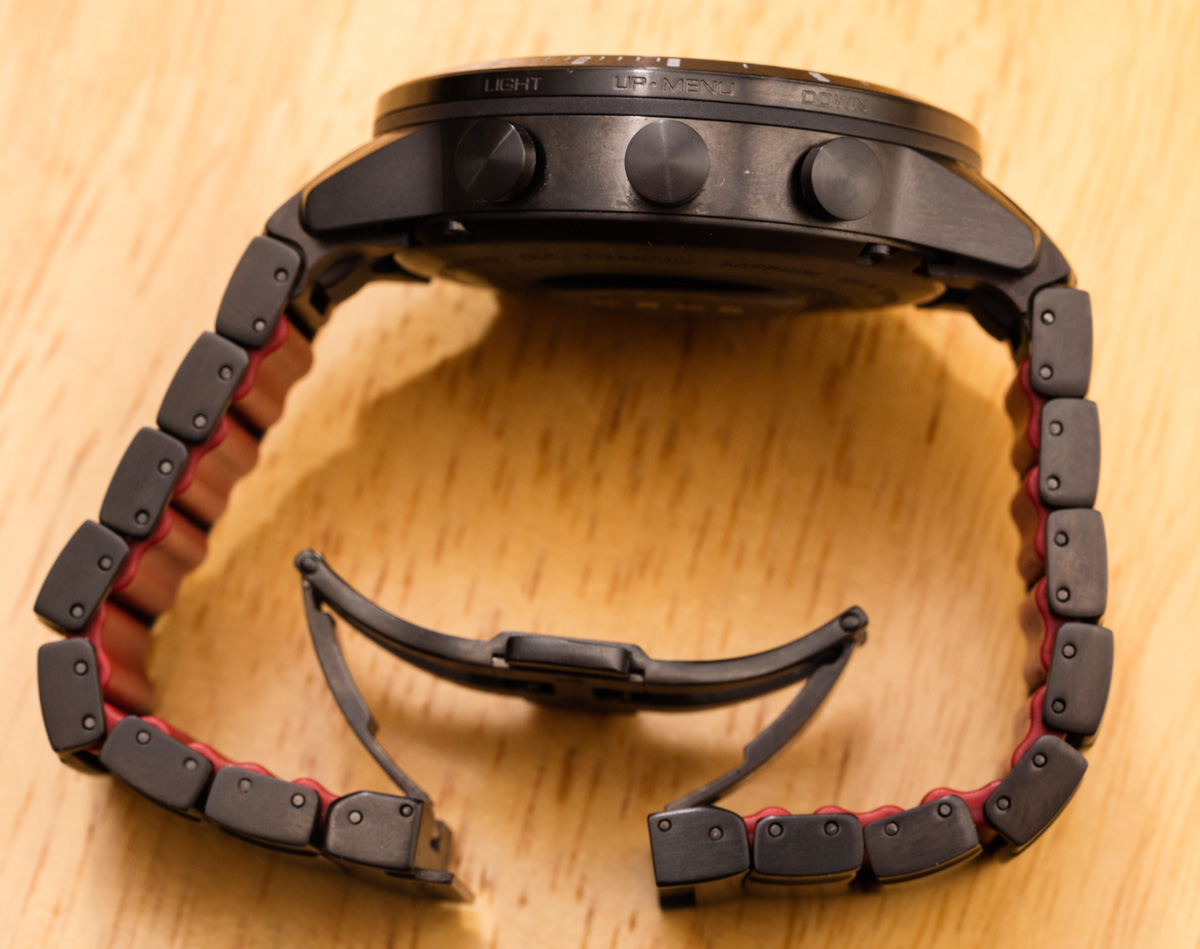
The Marq Driver, and Marq collection overall, is currently in a small pantheon of “cool-looking” luxury smartwatches, which currently have slim offerings (such as the Apple Watch and the TAG Heuer Connected). Each of these products uses different software and will be better or worse for different customers. If your life doesn’t require a macho watch and you never go outside, the Marq will be overkill for you — it might be better to focus on a smartwatch that is more about messaging, etc… The Garmin Marq, however, is a satisfying product for a variety of wearing purposes, but its core functionality will be sorely neglected if you aren’t the type of person who is concerned about fitness or exploring the world around you.
If you are, however, one of those people (and there are many), the Marq sits on your wrist idly reaching for any serious adventure you want to throw at it. The materials used to make the watch are designed to give the Marq Driver impressive durability, and you could theoretically get it wet in a pool and take it to dinner right afterward. Battery life is actually very impressive. The worst battery life gets, according to Garmin, is a mere nine hours if you are constantly playing music and tracking with GPS. It is true that using GPS means you’ll probably have to charge the watch (which happens quickly) once or twice a day. In normal mode without regular GPS connection, you’ll get days of use out of the watch. On a regular 12-18 hour day after starting at 100% battery life, the watch I tested was still at about 92-94% battery life – and that is after many hours of the watch constantly vibrating notifications to my wrist and, of course, measuring my heart rate.
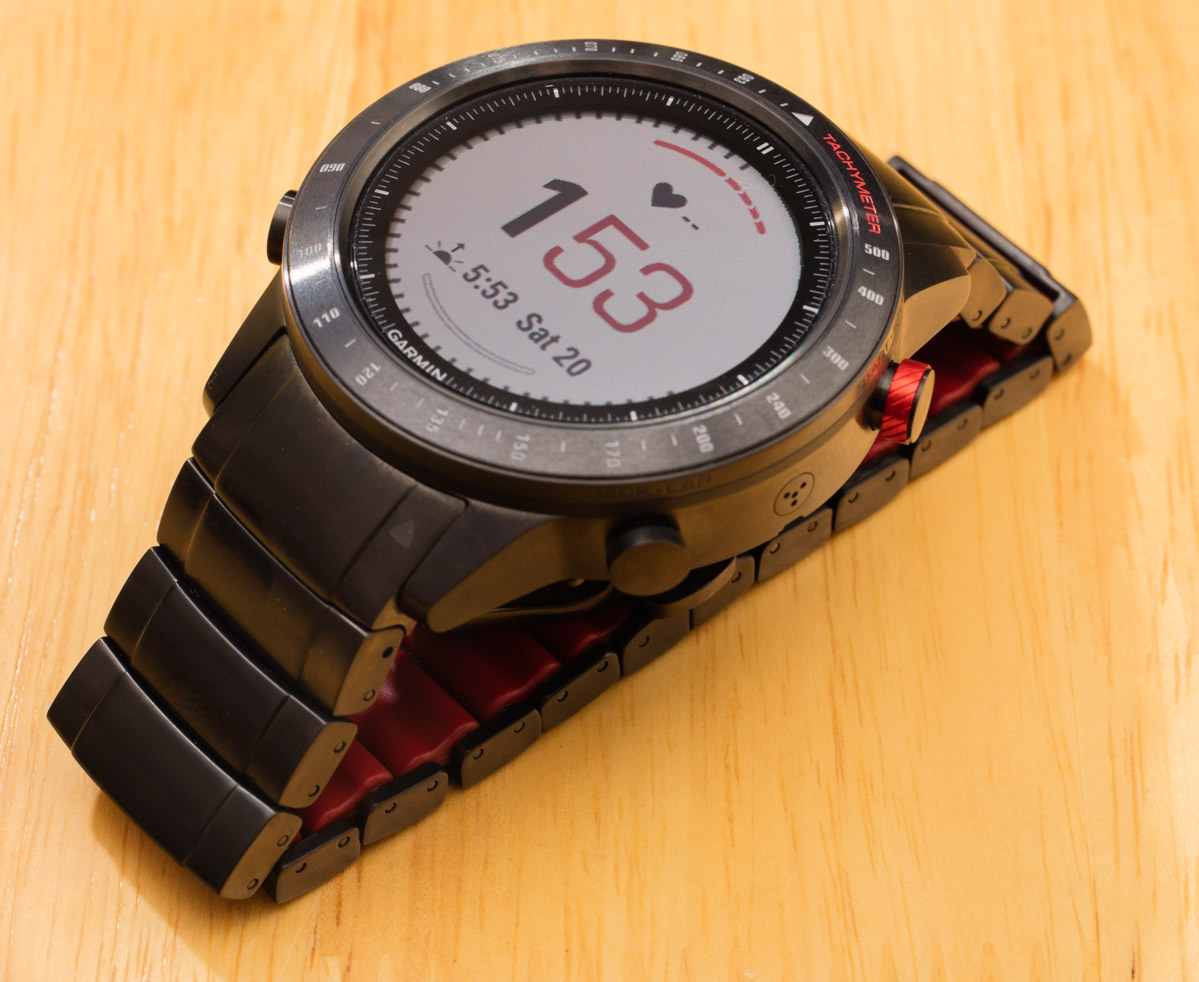
The Marq case is designed with straps that use a small lever to detach without tools. The Marq Driver comes with a sport black strap or a more interesting titanium link and silicone strap. I love this strap because it has the snug comfort of a sport strap, but the compelling look of a bracelet. This is not a new invention for Garmin, but it is among the few things the brand has designed that is more on the fashion side than strictly being a tool — and, for that, I find it additionally fascinating.
Garmin positioned the Marq Driver as the top of the Marq smartwatch collection in terms of price. About $1,000 separates the most from the least expensive Marq model. The reason is merely related to the cost of materials, as the DLC-coating over titanium, full bracelet, and ceramic bezel add cost here and there. It is a monumentally cool smartwatch and a wonderful tool that has more functionality than I will ever use. Is the Garmin Marq an “I need this product?” Not for the majority of people, though there will be some. Is the Garmin Marq smartwatch an “I want this product?” Yes, and this is where Garmin should get the most accolades. Price for the Garmin Marq Driver is $2,500 USD (the entry-level Marq is the Athlete is $1,500 USD). Learn more at the Garmin website here.
Necessary Data
>Brand: Garmin
>Model: Marq Driver
>Price: $2,500 USD
>Size: 46mm-wide, 14.7mm-thick, and about 60mm lug-to-lug distance (on bracelet)
>When reviewer would personally wear it: As as durable and attractive daily-use smartwatch, assuming a workout or hike might be on the horizon sometime soon.
>Friend we’d recommend it to first: Traditional watch-lover interested in smartwatches but concerned about going down in wrist looks and quality by moving to a smartwatch from their luxury watch.
>Best characteristic of watch:
Excellent materials and construction quality. High comfort in an attractive package with lots of variety for consumers in the larger Marq collection. Smartwatch functionality feels refined and purposeful, excellent tracking and data-precision performance.
>Worst characteristic of watch: Screen could be a bit brighter when not backlit. Case is still long, even though Garmin did its best to make the dimensions smaller than the older Fenix series. Software is robust but requires training. Higher price will cause consumers to very carefully consider making a purchase.

